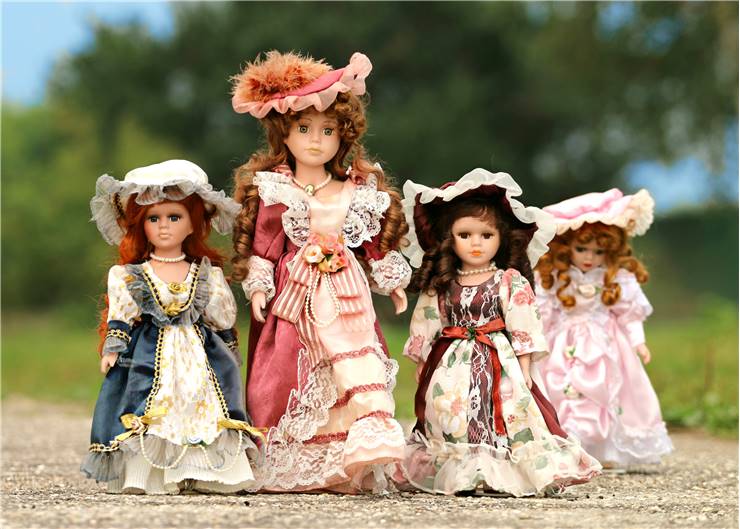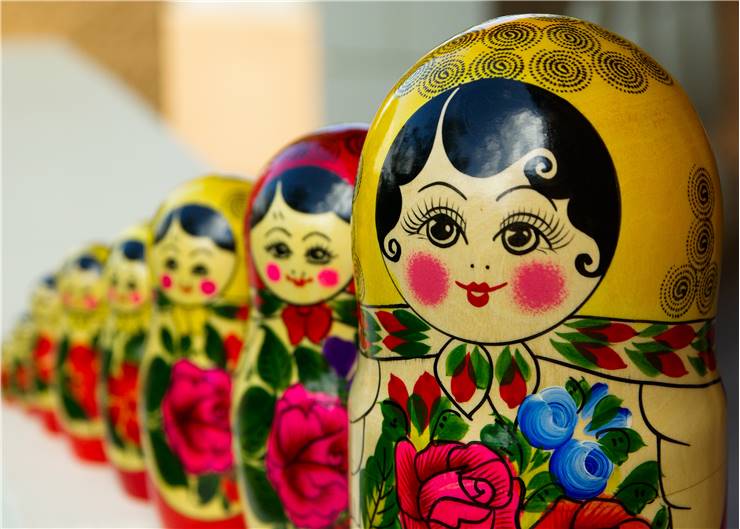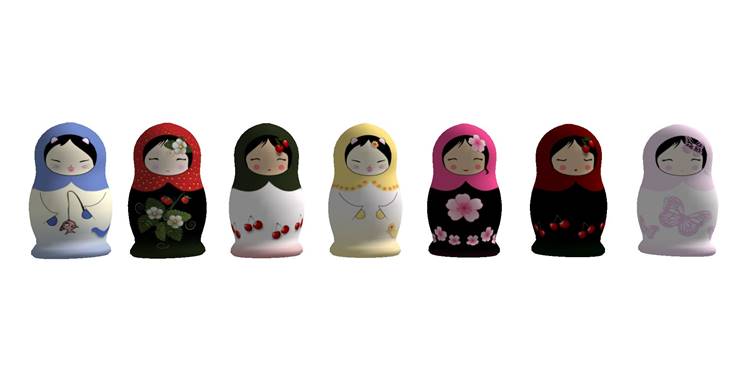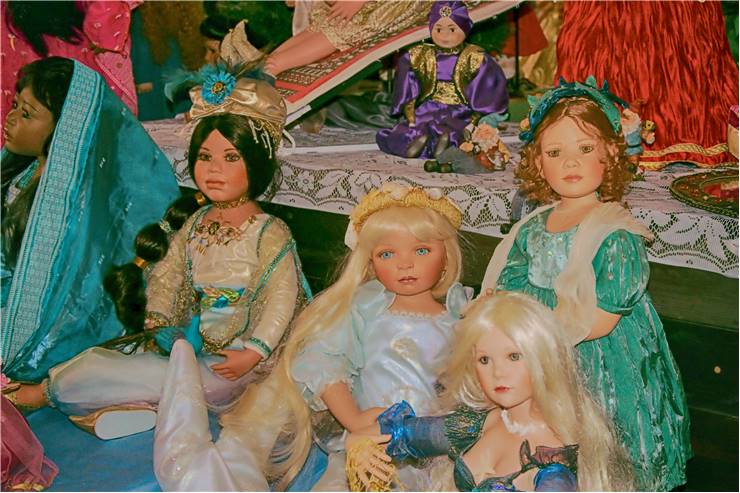Collectible Dolls History and Value
In the early 20th century almost entire doll-making industry shifted from china porcelain and bisque porcelain to more durable, easier to mass produce and lower cost dolls created from newly introduced building materials such as plastic and polymer compounds (rubber, celluloid, and most commonly soft vinyl). The wide availability of cheaper dolls saturated the market with dolls created for children, leaving the culture of collecting and showcasing elaborate and expensive life-like dolls in the past. However, as decades went on, the movement emerged that had a goal of recreating the glory days of bisque dolls popularity where wealthier individuals collected and accessorized high-end bisque dolls according to their tastes. The origin of the modern bisque doll collector movement can be traced to the 1940s United States where several companies started producing “artist dolls” made from bisque. Those dolls were not copied from earlier designs, but are wholly original and were intended from their inception to be purchased by the adults. The production of these “artists dolls” were not only focused on dolls, but also on their various accessories.
Initially slowly appearing in the 1950s and 1960s United States, the hobbyist movement of bisque dolls recreation managed to gain a tremendous boost in popularity in the 1970s. Members of this movement re-learned techniques of bisque dolls manufacture, and started not only producing recreations of the famous 19th-century model dolls but also creating the base for the modern marketplace for surviving antique dolls. As the popularity of this movement grew, professional companies started catering this market by not only offering newly produced life-like models made in the style of 19th-century dolls but also providing the services of repair, restoration, and conservation. By 1980s, this movement that popularized the reproductions of bisque dolls reached the continental Europe (especially France and Germany, home of the many original manufacturers of antique bisque dolls), Great Britain and Australia. By the end of 21st century, collectors market of bisque dolls was well established and was large enough to fuel steady release of new doll models that were by then produced by the factories located mostly in China. The vast majority of those newly produced dolls are of the cheaper and smaller varieties, but more elaborate and expensive models can still be found today.

The collectors market that arose in the second half of 20th century has well-developed rules that determine the initial value of antique dolls. The antique dolls are usually those who can be determined to be made before the 1930s, although the most prized models are those created in France or Germany before the end of 19th century. For larger dolls, prices range between $50 for the damaged models of less known manufacturers, to the several thousand dollars or more for higher quality dolls that were preserved in excellent condition. For example, French adult-like fashion dolls created between 1860 and 1890 are usually worth over $2000 USD, while the dolls from the better-known manufacturers such as Hurlet, Bru and Jumeau can be worth over ten times more.
Dolls molded to look like kids or babies are also very popular, and highest prices are usually given to the well-preserved dolls created by the manufacturers such as Bri and Jumeau and others. German dolls from the 19th century are also very well regarded, with higher prices being usually left to the dolls with good character faces. Even the lower quality models such as mass produced smaller bisque dolls from manufacturers such as Armand Marseile and Kestner and even unmarked dolls whose origin cannot be fully determined can fetch the price of few hundred dollars. The collectible market also prizes very small dolls. A vast majority of them cannot hold large selling price, but there are exceptions. For example, 1-inch tall models from specific doll makers such as Carl Horn can reach the price of more than $150 per single doll. Well-preserved sets are usually prized much more.

Determining the initial price of the doll requires from the owner to closely examine their doll and extract as much information from it. The first thing that has to be determined is the manufacturer and year of production (logo of the manufacturer and date is usually pressed into the neck of the doll). If there are no such markings, the look of the dolls face, accessories and build material can usually be great hints toward determining its origin. Build quality and condition of the doll are very important for determining the value of the bisque doll. The condition of the bisque porcelain skin, paint, eyes, hair, body (with articulated or fixed legs, hands or head), and clothing accessories all play an important role in determining the price, but to many collectors the thing that is valued the most is the doll’s authenticity (proved by the certificate that is given by the companies who determine the origin and value of antique items), quality of the craftsmanship that was invested into dolls creation (most valued are models with highly detailed painting), and the history regarding the creation or the use of the antique doll. Dolls with clothed mouths, more neutral facial expressions (even more with “not pretty” and non-smiling expressions), and articulated limb motion are valued more. The highest prices that collectors prefer to pay are left for the antique dolls that are well preserved in their original form. Any repair, restoration or conservation can lessen the value of the doll, but even dolls who went through those processes can fetch the good price.




